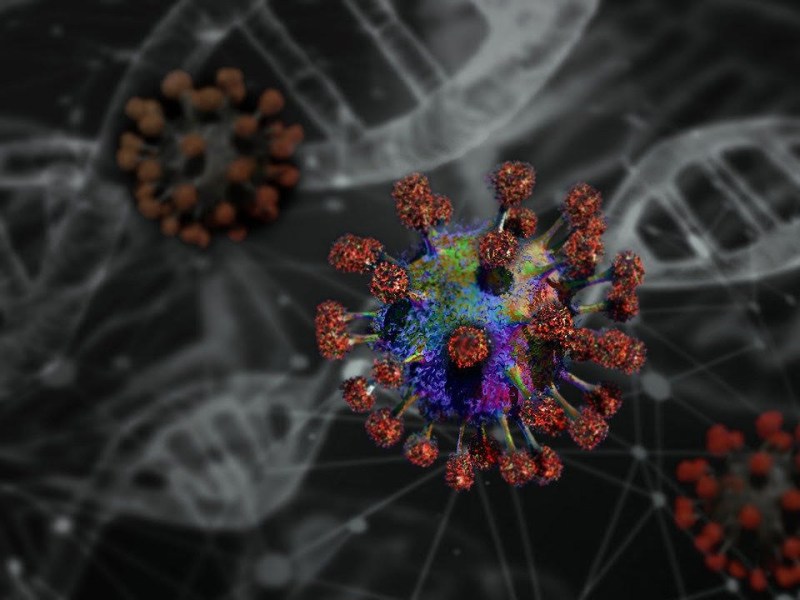Stanford computer scientists are working with the country’s leading epidemiologists and volunteers to collect county-level data about when social-distancing regulations went in place, hoping to inform decisions on when to ease them.
The researchers are aiming to help answer the nation’s looming questions: What will happen if counties relax social-distancing measures? How effective has each measure been?
The crowdsourcing site socialdistancing.stanford.edu collects information via an online survey from volunteers who report when social-distancing measures went into place in different U.S. counties. The team behind the site verifies the data based on public news sources and government communications before sending it to epidemiologists and making it publicly available on the website.
“Crowdsourcing is essentially the process of making an open call for help,” said associate professor of computer science Michael Bernstein, who launched the site on April 6.
Bernstein embarked on the project after receiving a call from Madhav Marathe, a professor of computer science at the University of Virginia (UVA). The project comes at a pivotal moment, as policymakers are debating when to open the country back up.
“The president might lift some of the interventions, and many governors may decide to lift them at least partially,” Marathe said. “People might think [social distancing] is not useful anymore, but that’s not true, because we are going to get [the virus] back.”
While many COVID-19 data-collection efforts have focused on the state level, the crowdsourcing site focuses on county-level information. Marathe, an expert in biocomplexity and computational epidemiology, considers it crucial that epidemiological models understand local contexts better.
“In the end, individuals are living in their counties,” Marathe said.
Regulations put in place by county governments, which sometimes differ from those implemented at the state or federal level, most directly impact how individuals perceive the severity of the situation in their area. Marathe said these perceptions drive behavior, which “in turn changes the disease habits, which in turn change the perception, and the cycle goes on.”
So far, the site has received more than 4,000 survey responses from 670 U.S. counties, according to Tum Chaturapruek M.S. ’19 Ph.D. ’20, a recent computer science graduate who is working on the project. But that’s not enough.
“We still need more data from all the counties,” he said. “There are over 3,000 counties.”
Jacob Ritchie, a first-year computer science Ph.D. student, is on the team leading the project, along with Bernstein, Marathe, Chaturapruek and 13 other researchers. He said one of the biggest problems with the data is that “we’re seeing a lot of these responses coming from the most populous counties and not many from the least.”
Bernstein is calling on Stanford affiliates to join the cause to help gather information about other areas.
“It’s important to us that we not only draw those conclusions based on extremely populous or wealthy counties like Santa Clara,” he said. “Stanford is very proud of having a geographically diverse student body. One of the things that would be most helpful is if students looked at the map [on the site] and saw whether their own areas were covered, and if not, forwarded the link to help us get over that hump for areas that are not major urban centers.”
The team members agree on the importance of collaboration with other institutions and companies who are working on similar projects. Stanford has been working with people at Keystone, the University of Georgia and Research Triangle International to collect, compare, verify and combine the data whenever possible, according to Ritchie.
“Everyone’s on the same team here,” Bernstein said. “Everyone wins if we can collectively curate this information.”
It is too early to draw any definite conclusions from the project’s data, Marathe said. He pointed to the importance of continuing the data-collection effort and complying with local regulations.
“The pandemic is not over. We have a long way to go,” Marathe said. “We need to understand how the interventions affect our epidemic. The only way we can do it is with the data that folks could help us collect. Without that, we would be driving, to some extent, blind.”
Future goals for the project include expanding internationally, as well as adding visual annotations of varying social distancing measures to the site’s map. For now, the researchers emphasize that fighting the pandemic is a team effort.
“Your actions are not only your actions,” Marathe said. “It’s your actions and others who are going to be affected by them.”
4/24/2020 2:51 pm: This article was updated to reflect that the site has now received 4,000 survey responses from 670 unique counties.
Contact Angie Lee at angielee ‘at’ stanford.edu.
